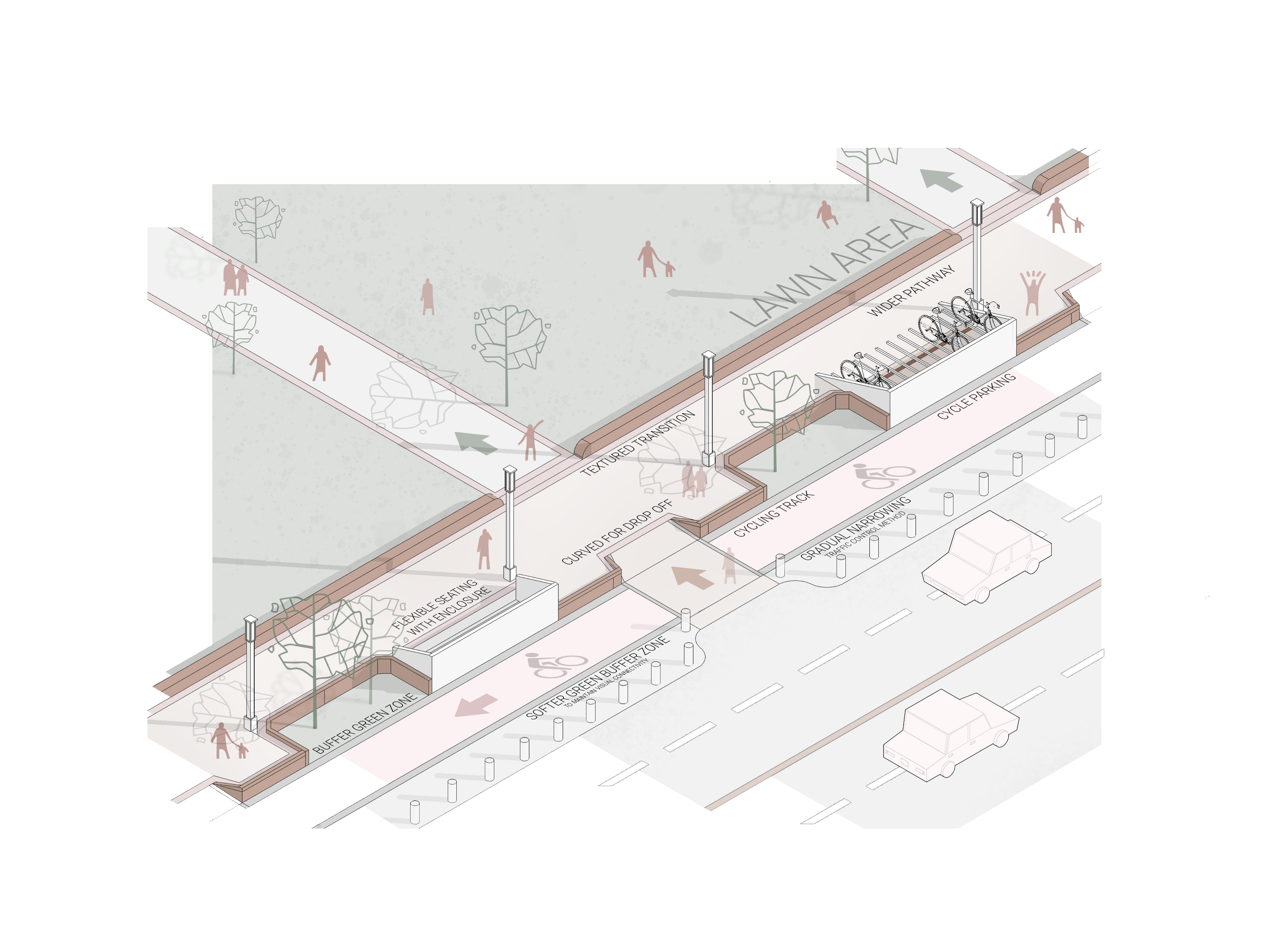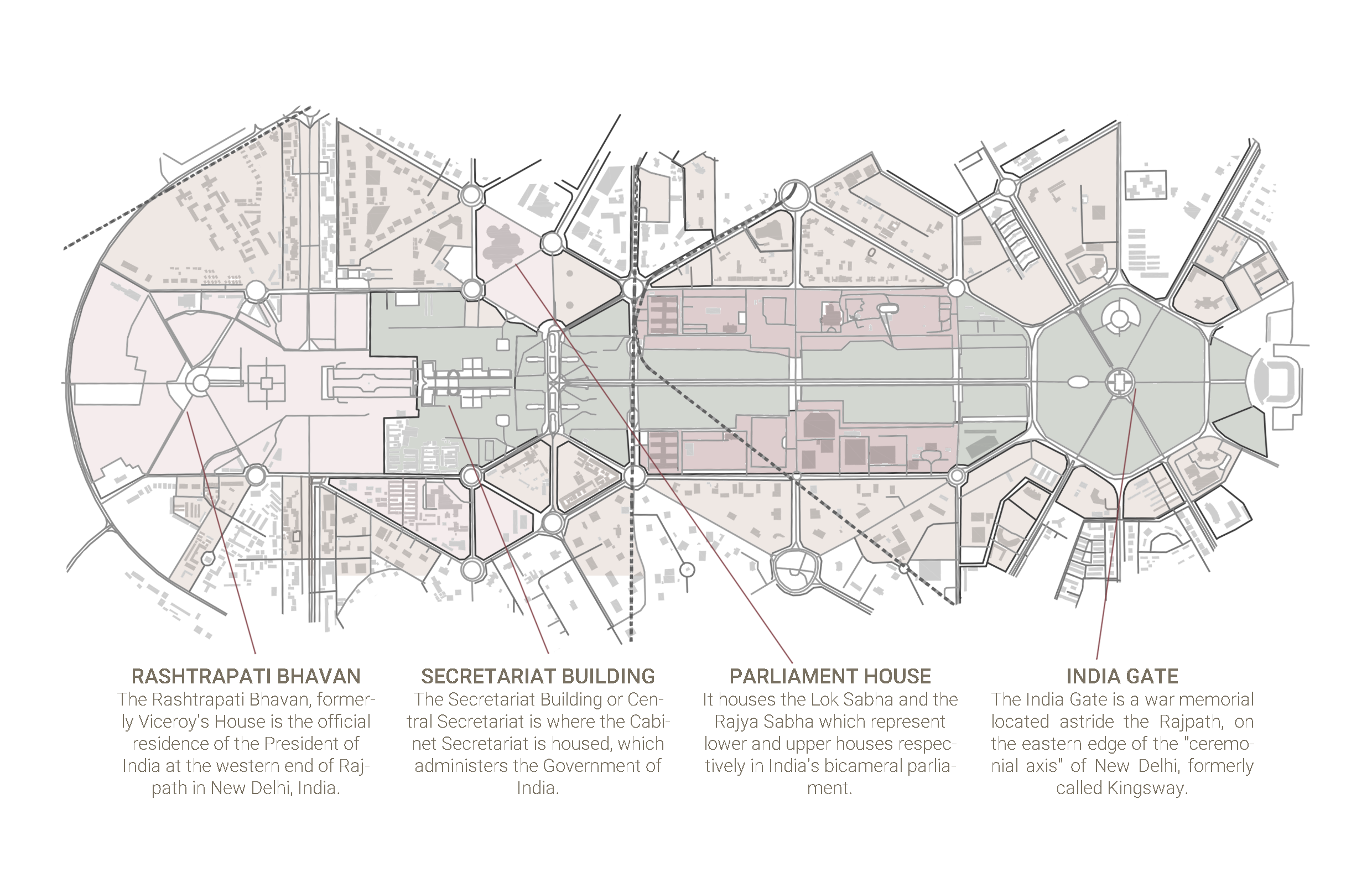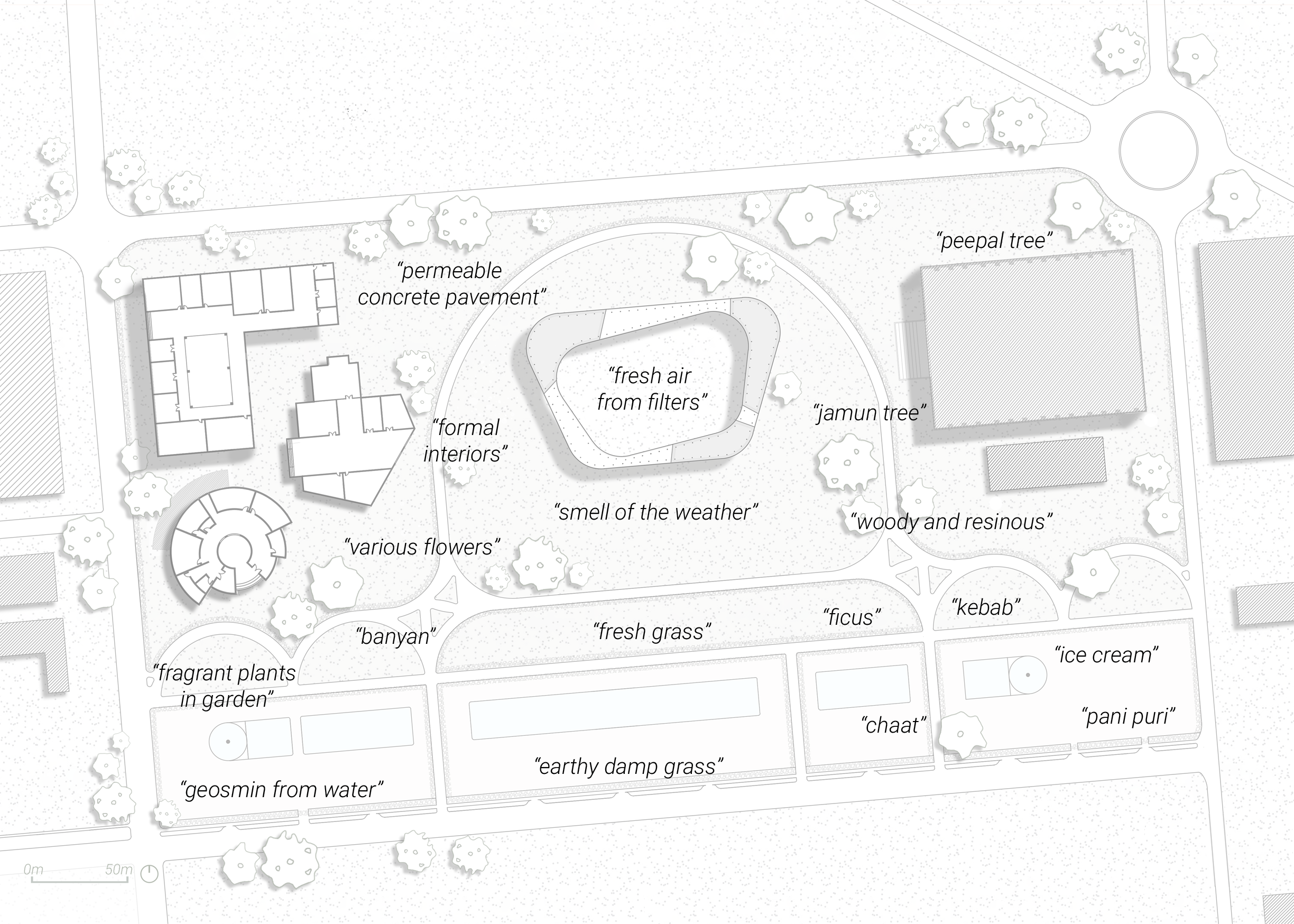
EXPANSE
URBAN DESIGN
Typology: Revitalization of Central Vista, New Delhi
Timeline: Fall 2020
Software: Rhino, SketchUp, Enscape, Adobe Suite
Tutors: Ar. Nikhil Kohale
Delhi, one of the oldest surviving cities, is an amalgamation of seven cities. All of which was destroyed and rebuilt several times, each leaving its own layer of architectural identity. It is also one of the fastest growing metropolis oscillating between 4% to 5% per year, in order to accommodate the growing population and strengthen its economic base.
Architecture as a matter of human life reflects the culture of every society interacting closely with structural, historical, political, economical and social features of society. People in every country try to follow their norms and maintain their value in making of architecture by creating designs. Changing the cultural and social attitudes in communities has the greatest impact on the architect. Therefore, the role of culture in promoting architectural identity seems essential.
Architecture as a matter of human life reflects the culture of every society interacting closely with structural, historical, political, economical and social features of society. People in every country try to follow their norms and maintain their value in making of architecture by creating designs. Changing the cultural and social attitudes in communities has the greatest impact on the architect. Therefore, the role of culture in promoting architectural identity seems essential.
CENTRAL ADMINISTRATIVE AREA

The Central Vista was designed as the capital of British India and envisioned to be the ‘living centre of administration’. It was inaugurated in 1931, with only five important buildings, the avenue and a monument completed: the Viceroy’s House, now Rashtrapati Bhavan, the Secretariats – North and South Blocks, the Council House, now Parliament House, the Record Office, now the National Archives and the All India War Memorial, now India Gate.
LAYERS OF URBAN FABRIC

Chosen plot for redevelopment, influenced by foot traffic, promotion of cultural identity, and adjacency to the India Gate.
OLFACTORY SYSTEM
OLFACTORY SYSTEM
AUDITORY SYSTEM


TRANSLATION OF LUTYENS' LINEAR DESIGN
TRANSLATION OF LUTYENS' LINEAR DESIGN
